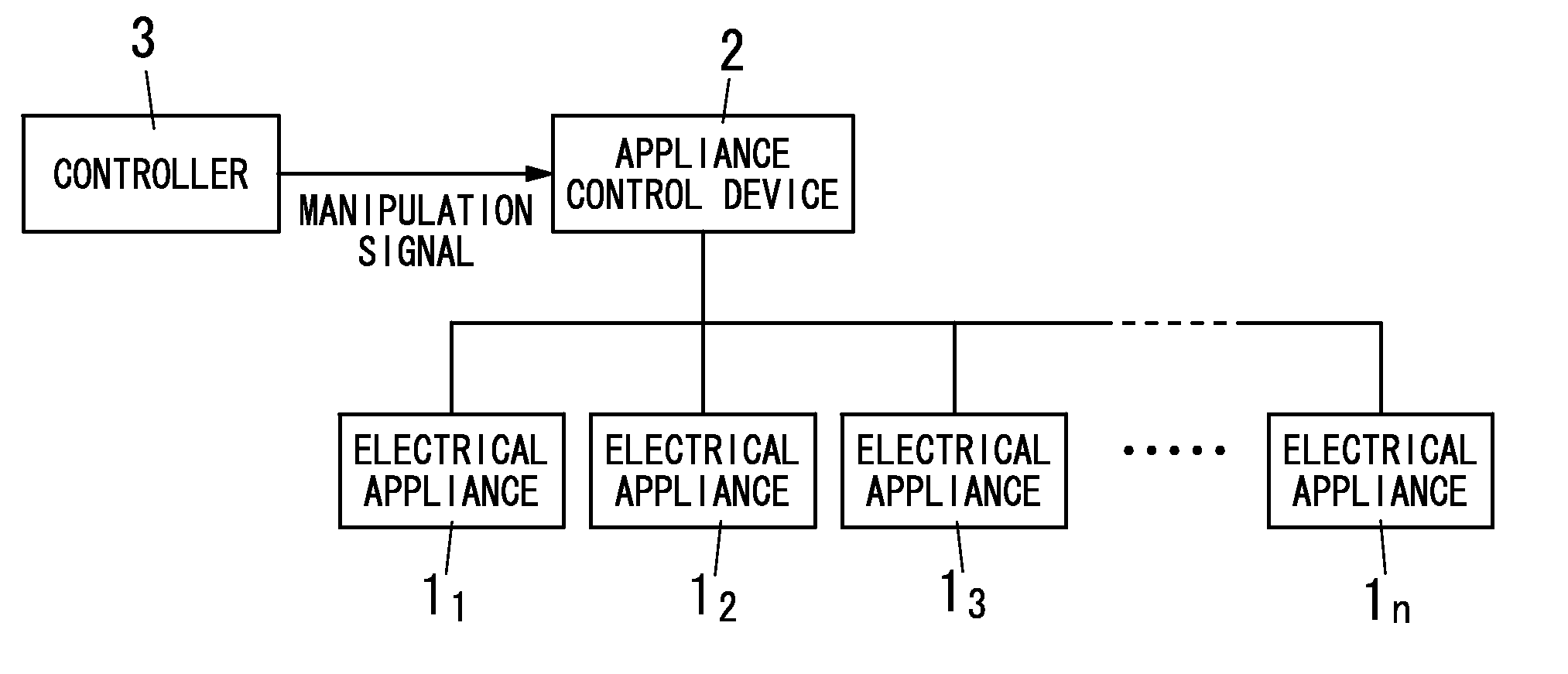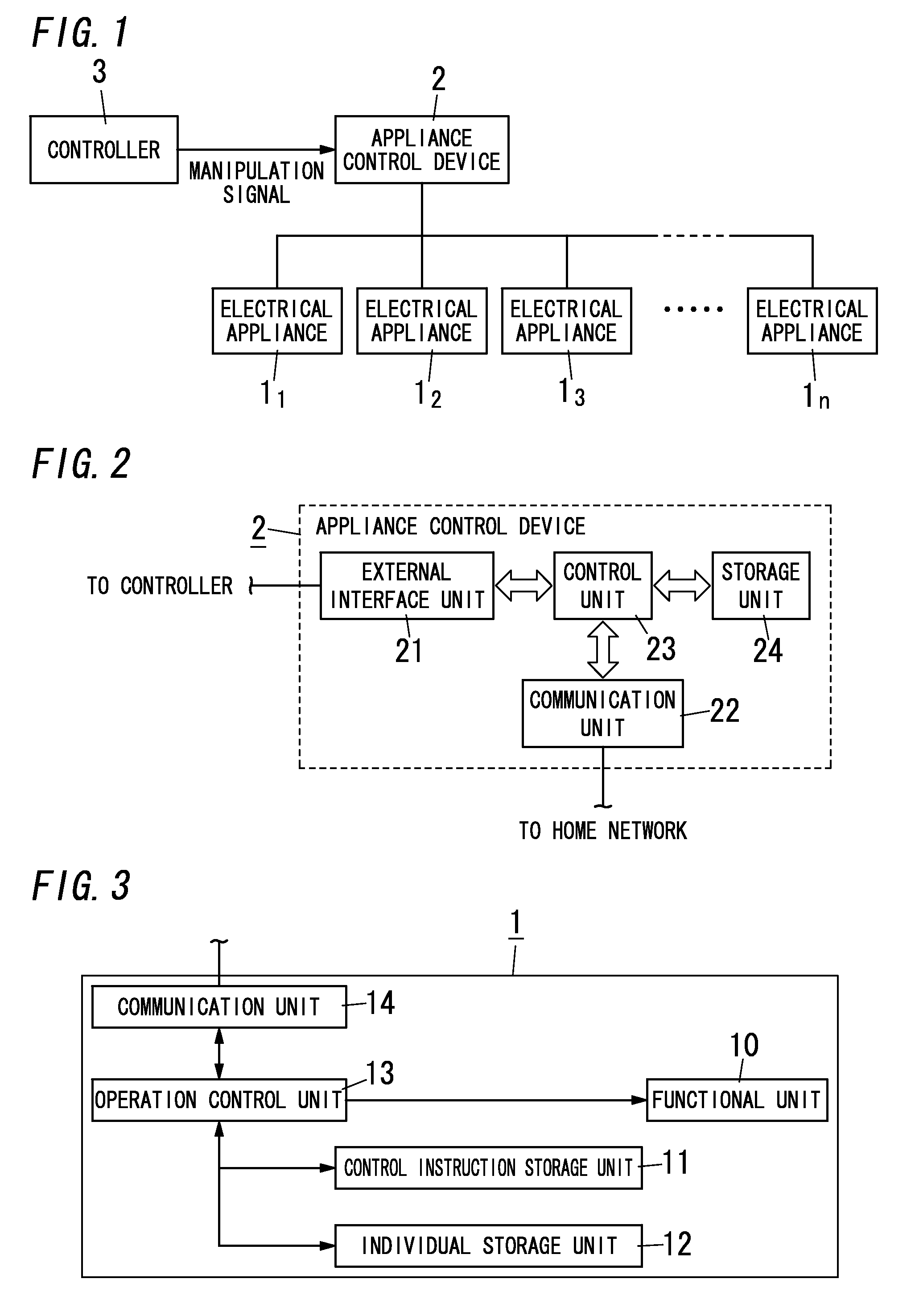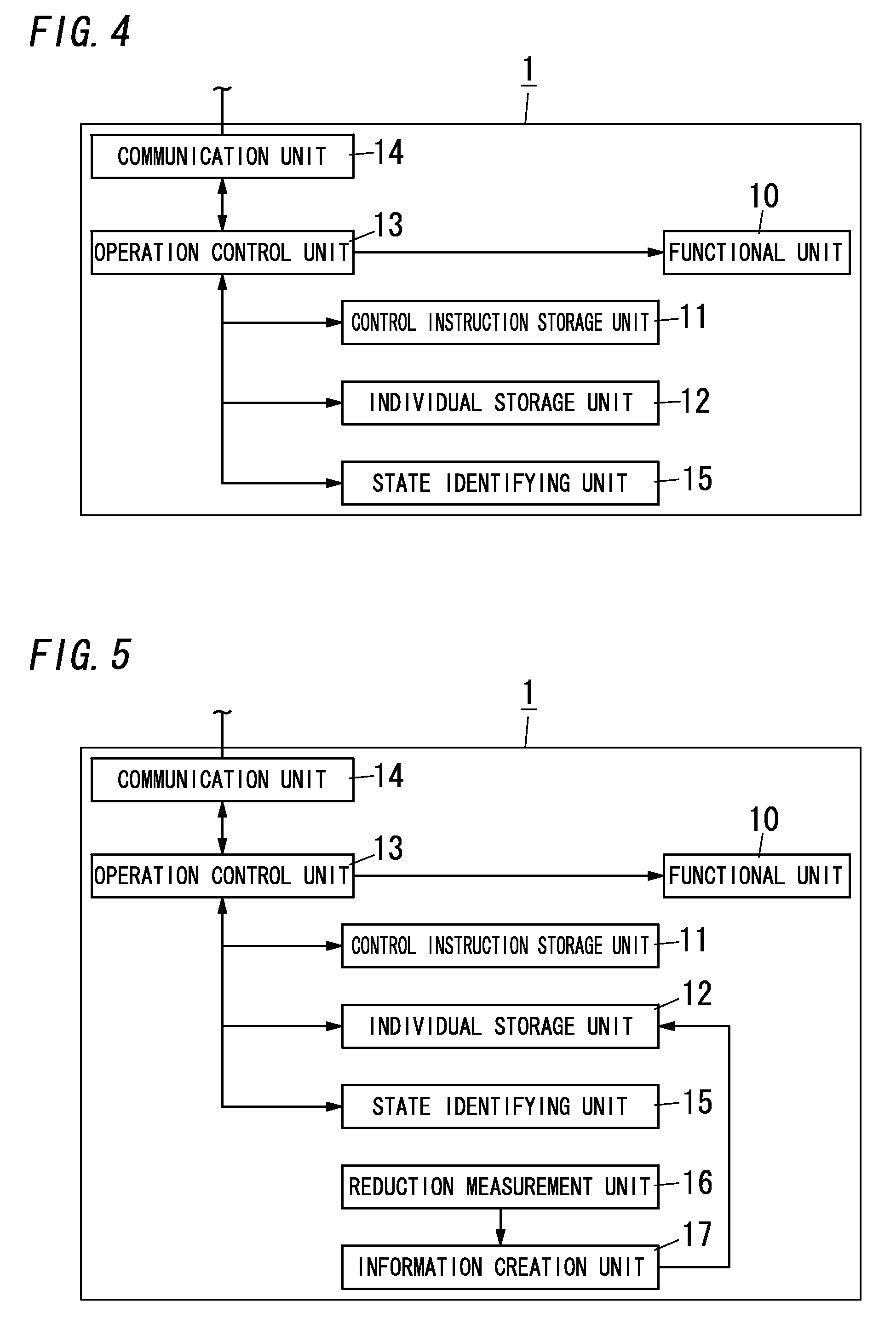Appliance control system
a control system and control system technology, applied in the field of application control system, can solve the problems of user being required to perform such a troublesome procedure, and achieve the effect of reducing the amount of power consumption
- Summary
- Abstract
- Description
- Claims
- Application Information
AI Technical Summary
Benefits of technology
Problems solved by technology
Method used
Image
Examples
first embodiment
[0021]As shown in FIG. 1, the appliance control system of the present embodiment includes plural electrical appliances (control-target appliances) 11, 12, . . . , 1n (the reference numeral “1” is used when there is no need to distinguish the respective appliances), an appliance control device 2 connected to the respective electrical appliances 1, and a controller 3 connected to the appliance control device 2. In the following explanation, it is assumed that each of the electrical appliances 1, the appliance control device 2, and the controller 3 is installed in a residence. For example, the electrical appliance 1 is a home appliance such as a lighting fixture, an air conditioner, a refrigerator, and a washing machine. As mentioned in the above, the appliance control system includes the plural electrical appliances 1 configured to operate with electrical power supplied from an external power source (e.g., a commercial power source, and a DC power source such as a solar cell and a fue...
second embodiment
[0071]The appliance control system of the present embodiment is different from the appliance control system of the first embodiment in that the energy conservation instruction which is received by the appliance control device 2 from the controller 3 includes a parameter for defining a time period for the reduction of the power consumption. In brief, in the present embodiment, the energy conservation instruction includes the total reduction amount and an energy conservation time period indicative of a continuous time period of the energy conservation control process.
[0072]In other words, in the present embodiment, the energy conservation instruction indicates the reduction amount of the power consumption as electric energy. For example, the energy conservation instruction indicates reducing electrical power by 100 W for 2 hours (=200 Wh). Accordingly, a user can request the energy conservation control process by designating electrical energy by use of the controller 3. Consequently, ...
third embodiment
[0081]The appliance control system of the present embodiment is different from the appliance control system of the first embodiment in that the appliance control device 2 selects the control order performed by the electrical appliance 1 in consideration of an energy conservation capability of the electrical appliance 1.
[0082]In the appliance control device 2 of the present embodiment, the storage unit 24 is configured to store, for each electrical appliance 1, the energy conservation capability indicative of a decreased amount of the power consumption caused by the performance of the energy conservation control process by the functional unit 10. For example, as shown in following TABLE 3, the storage unit 24 stores the energy conservation capabilities (expressed in the unit of the percentage) of 10%, 20%, and 50% with regard to the electrical appliance 11. The energy conservation capability expressed in the unit of the percentage is calculated based on rated power consumption. The e...
PUM
 Login to View More
Login to View More Abstract
Description
Claims
Application Information
 Login to View More
Login to View More - R&D
- Intellectual Property
- Life Sciences
- Materials
- Tech Scout
- Unparalleled Data Quality
- Higher Quality Content
- 60% Fewer Hallucinations
Browse by: Latest US Patents, China's latest patents, Technical Efficacy Thesaurus, Application Domain, Technology Topic, Popular Technical Reports.
© 2025 PatSnap. All rights reserved.Legal|Privacy policy|Modern Slavery Act Transparency Statement|Sitemap|About US| Contact US: help@patsnap.com



